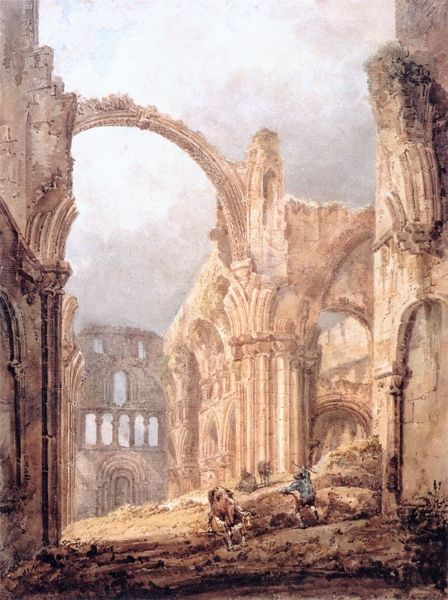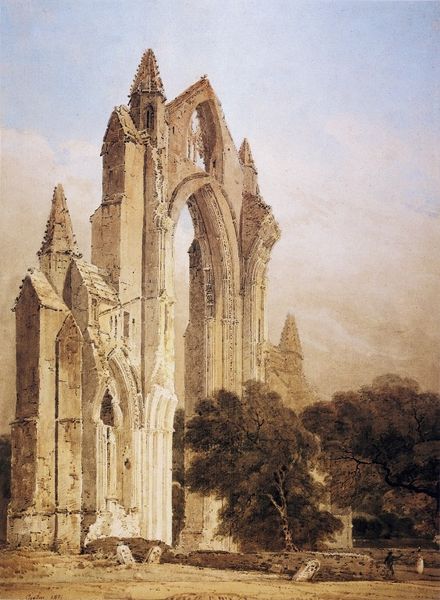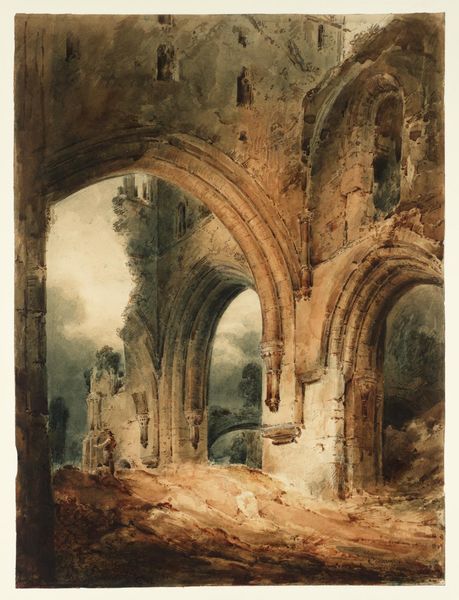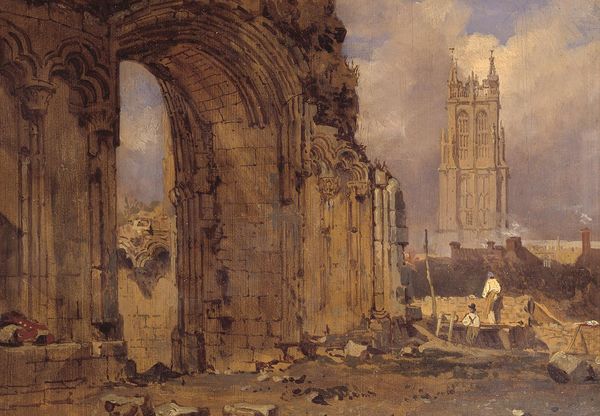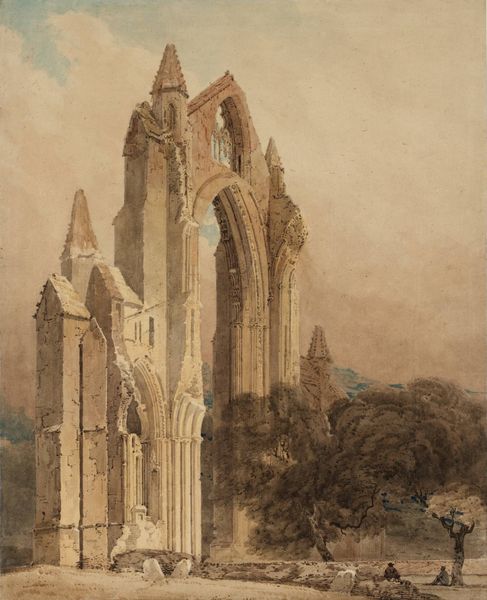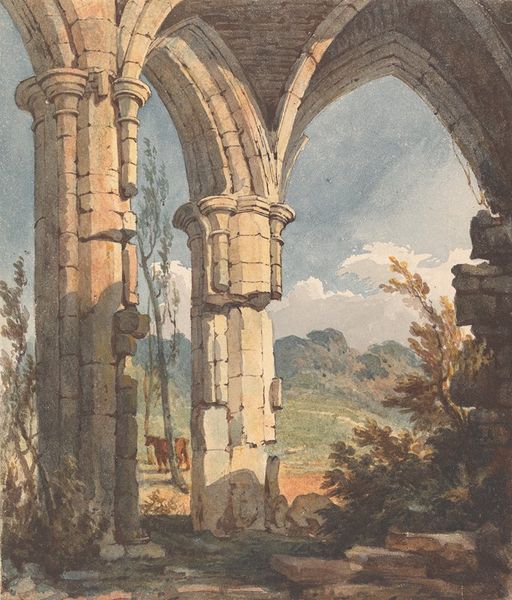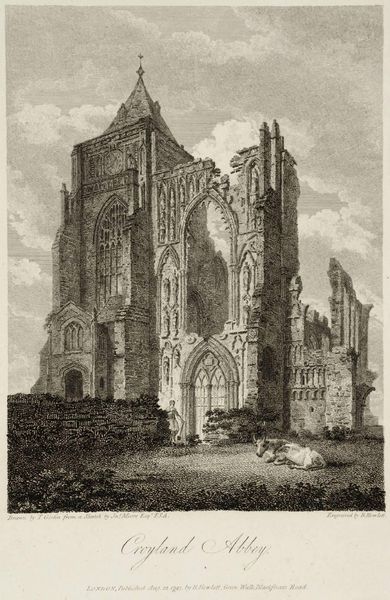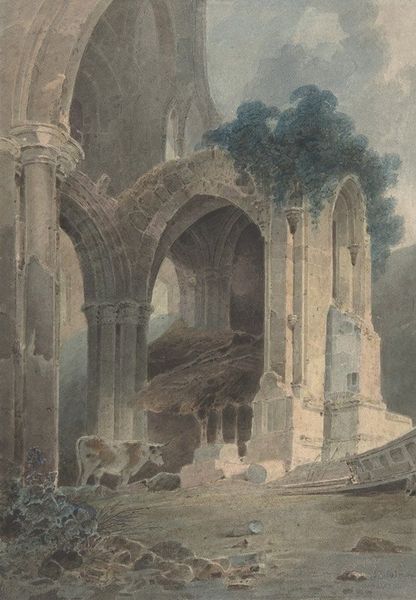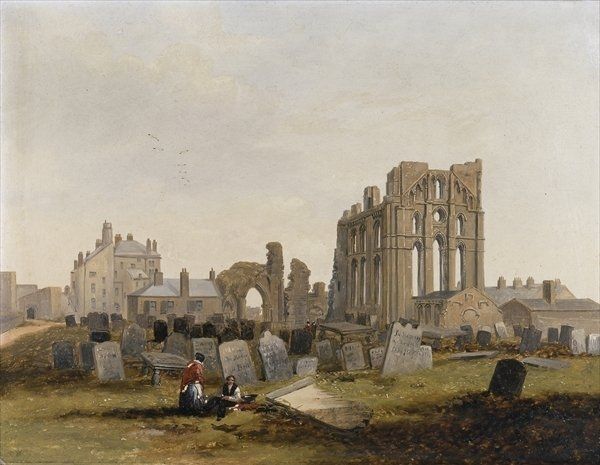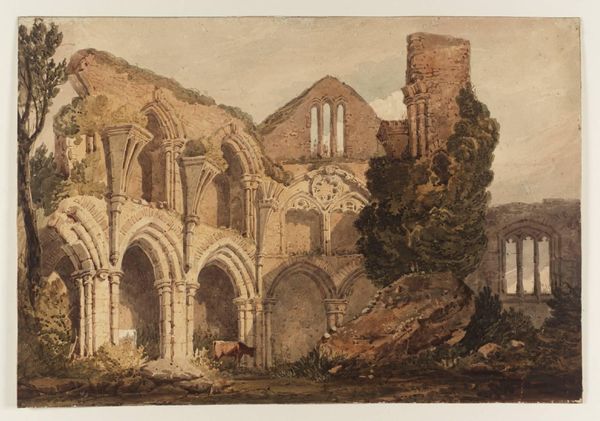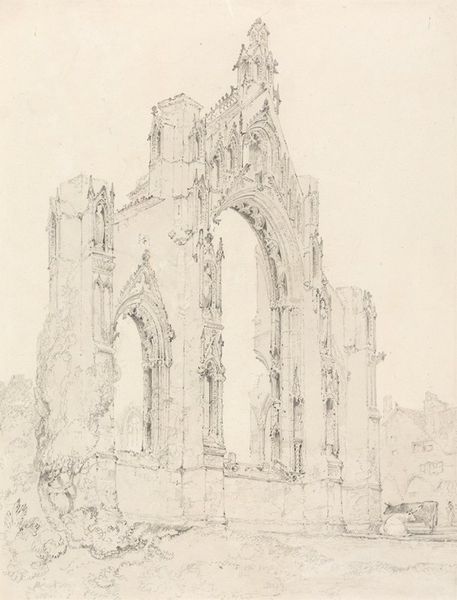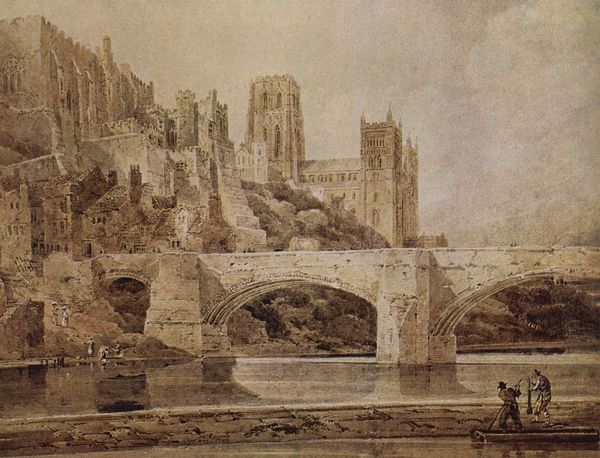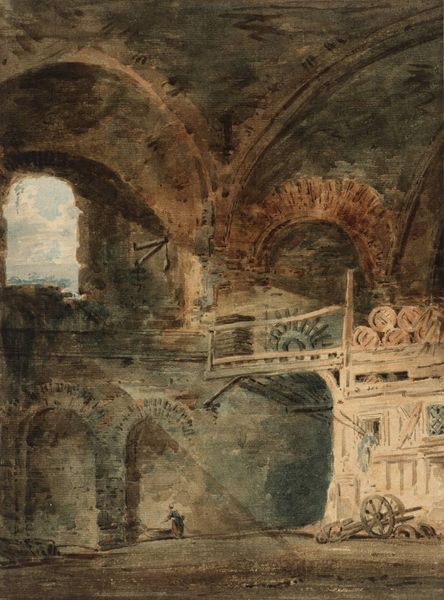
plein-air, watercolor, architecture
#
plein-air
#
landscape
#
watercolor
#
romanticism
#
watercolor
#
architecture
Copyright: Public domain
Curator: Thomas Girtin's "Lindisfarne," painted in 1798, is a fascinating example of early plein-air watercolor technique capturing the romantic ruin of a northern abbey. Editor: It’s incredibly evocative, almost melancholic. The detail he manages with watercolor to portray this ruin, and the delicate light he captures, is stunning. It's more than just a depiction; it’s a mood. Curator: Exactly. The watercolor medium itself lends to the romantic sensibility. Girtin's innovative methods, working directly from the landscape and favoring a broad wash technique, influenced the style and trade practices of watercolor painting at the time, breaking away from the tight, controlled aesthetic of earlier topographical artists. He wanted to emphasize the picturesque element. Editor: The positioning of the lone figure and the distant livestock really speaks to the scale of this architectural decay; they accentuate humanity’s fleeting existence against the backdrop of enduring history, while subtly referencing agricultural land use policies. But look at the raw material – those aged stones, weathered by wind and rain! I can almost feel their texture through Girtin's skilled brushwork. Was this work commissioned, or created with speculative intent to enter London's marketplace of images? Curator: He had wealthy patrons that made him comfortable. However, Girtin created it for London’s art market; views like this resonated with a public eager for romantic representations of Britain's past. This image serves as a signifier of national heritage, prompting questions regarding whose heritage it signifies. Lindisfarne held complex symbolic significance—a center of early Christianity raided by Vikings—and images like Girtin's arguably constructed specific public understanding of British history and its intersection with religion. Editor: The picturesque aesthetic gained momentum precisely because it offered a sanitized and aestheticized view of these complex histories, diverting the gaze from harsher economic and societal issues by embracing a seemingly timeless "past." Curator: Absolutely, and through mass-reproduced prints based on images like Girtin's, these picturesque visions of a romanticized past permeated British culture and influenced tourism in a newly united Britain. Editor: Considering the impact of this landscape on the public and the physical labor involved in transporting materials and building an abbey like Lindisfarne originally—it all adds depth and texture to the scene, doesn't it? It makes one think about our connection to history on a much deeper level. Curator: Indeed. It is amazing how this single artwork helps illuminate British art and cultural history.
Comments
No comments
Be the first to comment and join the conversation on the ultimate creative platform.
